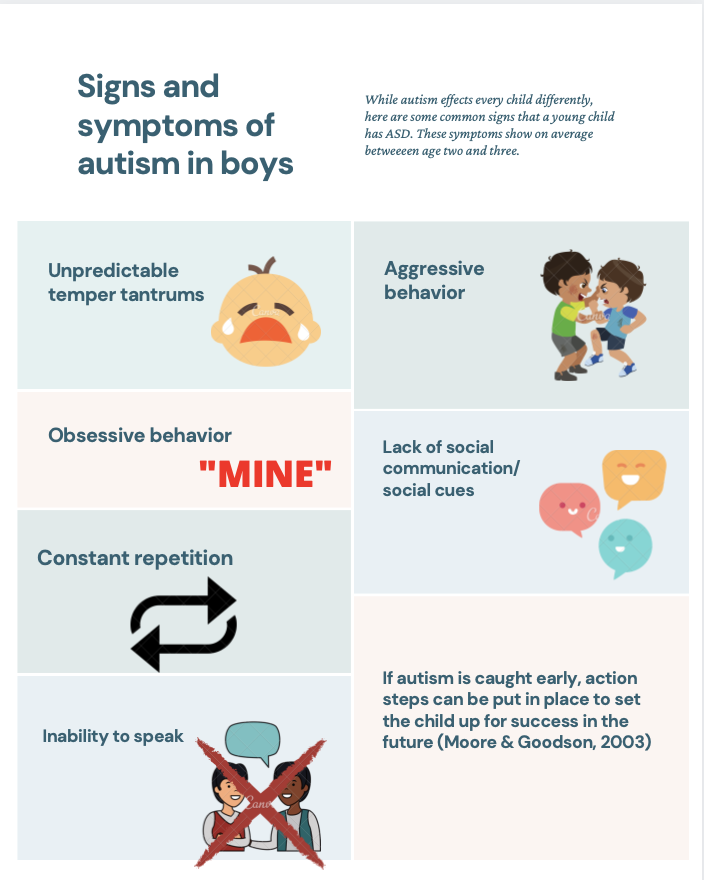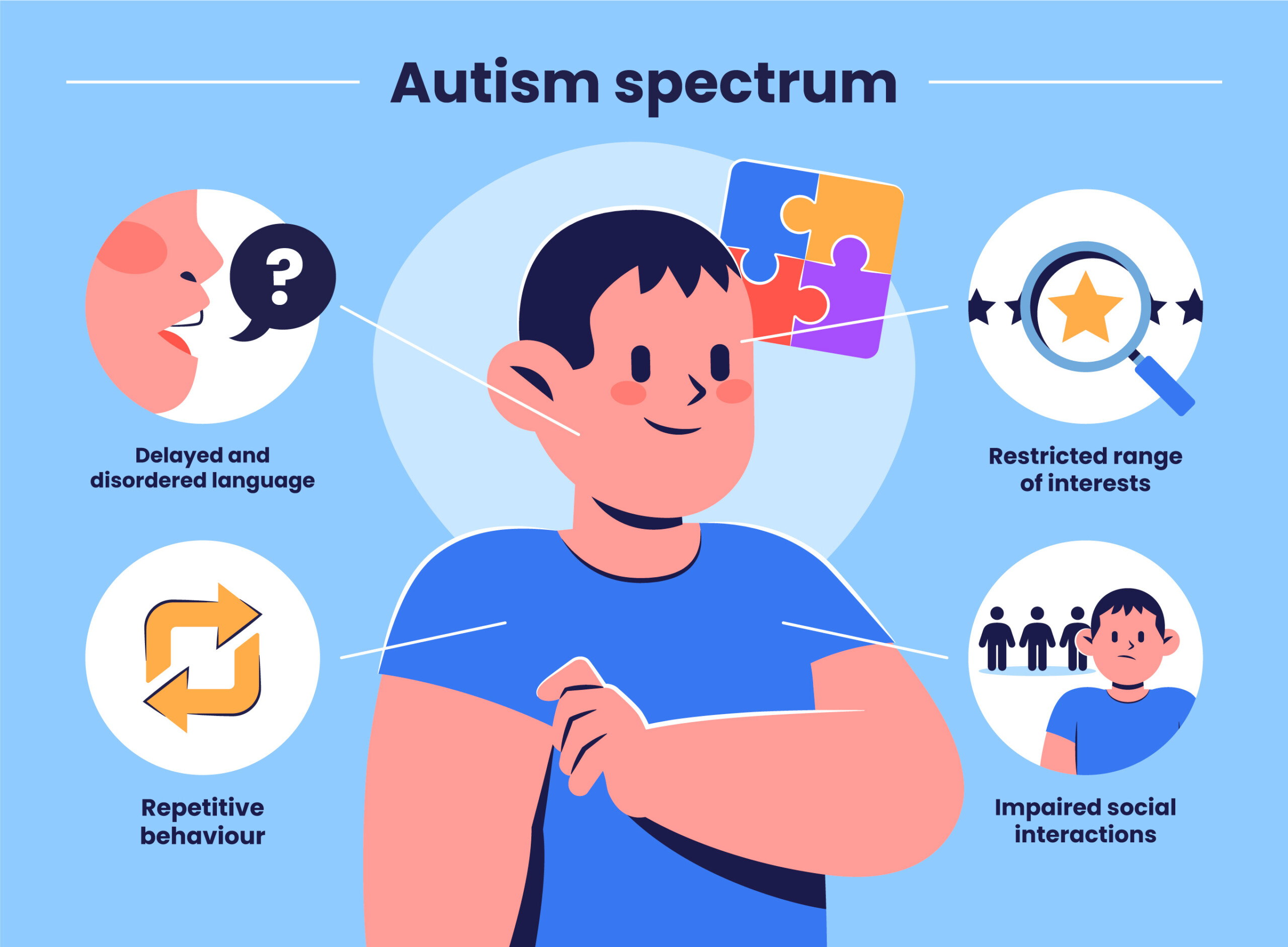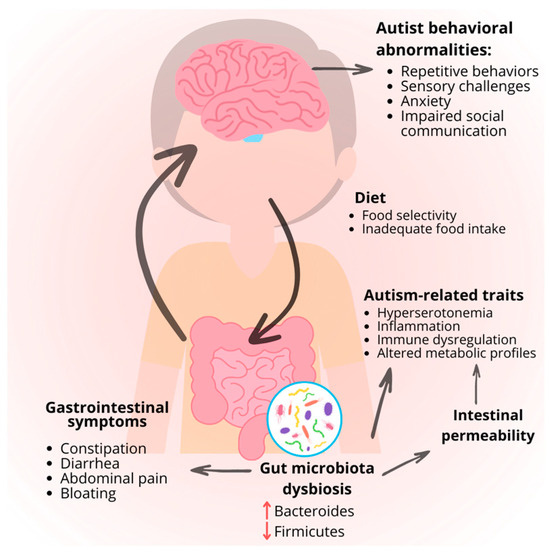Top 10 facts about how an Autism Therapist's intervention shapes social growth in autism
Top 10 facts about how an Autism Therapist's intervention shapes social growth in autism
Blog Article
Recognizing the Impact of Behavioral Autism on Life and Social Communications
You might not realize how deeply behavioral autism impacts day-to-day live and social interactions. People on the range often browse a world loaded with interaction difficulties and sensory overload. These difficulties can result in aggravation and seclusion, affecting their partnerships and overall health. Comprehending these nuances is necessary for fostering supportive settings. What techniques can we carry out to create even more meaningful links and inclusive spaces? The answers could shock you.
Defining Behavior Autism and Its Qualities
Behavioral autism, typically referred to as autism spectrum disorder (ASD), incorporates a variety of conditions characterized by difficulties in social interaction, communication, and recurring actions. You might notice that people with ASD commonly have a hard time to analyze social cues, which can bring about misunderstandings in conversations. They may find it difficult to develop eye call or take part in tiny talk, making social situations feel frustrating.
Interaction problems can show up in numerous means, from postponed speech advancement to a choice for utilizing less words. By acknowledging these characteristics, you can cultivate an environment that advertises acceptance and encourages reliable interaction, assisting individuals with autism flourish in their day-to-day interactions.
The Spectrum of Autism: Comprehending Variability in Actions
Autism spectrum condition (ASD) isn't a one-size-fits-all medical diagnosis; it varies extensively amongst people. You might discover that some people with ASD show moderate signs, while others might face much more considerable obstacles. This irregularity can show up in habits, rate of interests, and sensory level of sensitivities. You may come across people who are highly verbal and involve easily in discussions, while others might like solitary activities or communicate non-verbally.
Additionally, the means individuals with ASD respond to sensory input can differ significantly; some may be overwhelmed by intense lights or loud sounds, whereas others prosper in boosting atmospheres. The spectrum also consists of distinctions in social communications; some people may battle to translate social cues, while others browse social setups with relative simplicity. Understanding this variability is vital, as it aids you value everyone's unique experience and dressmaker assistance to their certain requirements, promoting an extra comprehensive atmosphere for every person.
Interaction Challenges Encountered by People With Autism
When you engage with people on the autism spectrum, you may observe their special interaction obstacles. They usually deal with troubles with both verbal and nonverbal hints, which can impact their social interactions. Comprehending these obstacles is vital for promoting better connections and support.

Verbal Communication Problems
Several individuals on the autism spectrum experience spoken interaction problems that can significantly impact their day-to-day interactions. You might locate it testing to share your thoughts, feelings, or requires plainly. This can result in aggravation for both you and those around you, as misconceptions occur. You might have a hard time with launching conversations, preserving a subject, or comprehending subtleties in speech. Usually, you may favor making use of straightforward language or recurring phrases, which can restrict your ability to involve in deeper discussions. Your speed, tone, or quantity may not straighten with social expectations, triggering others to misunderstand your purposes. Acknowledging these challenges can aid you and your assistance network create approaches to enhance communication and promote better connections with others in your every day life.
Nonverbal Communication Obstacles
Spoken interaction isn't the only challenge individuals on the autism range face; nonverbal communication obstacles can be simply as considerable. These obstacles can lead to misconceptions or false impressions of social signs, making communications really feel overwhelming or complex. By resolving nonverbal communication, you can discover approaches to boost your social experiences and boost your general high quality of life.
Social Communication Effects
Social interactions can commonly feel frustrating due to the distinct interaction obstacles dealt with by people with autism. You could have problem with interpreting social hints, making it difficult to comprehend sarcasm or body language. This can result in misunderstandings or uncomfortable moments in conversations. Additionally, starting and maintaining discussions might feel tough, causing anxiety in social scenarios. You may choose structured environments, making spontaneous interactions unpleasant. It's additionally usual to experience problem in involving in tiny talk, which can hinder creating brand-new friendships. Recognizing these challenges can help you find methods to improve interaction, such as practicing social abilities in secure setups or making use of aesthetic aids - Aba Therapist Near Me. Comprehending your demands permits you to navigate social communications with greater self-confidence and simplicity.
Social Interaction and Partnership Building in Autism
While building relationships can be testing for individuals with autism, comprehending their distinct point of views and interaction styles can cultivate meaningful links. You might here see that many people on the range prefer straight communication and may battle with social signs or tiny talk. By being simple in your communications, you can aid produce an environment where they really feel comfy.
Make the effort to observe and listen how they express themselves. This insight can guide you in steering conversations extra successfully. Participating in shared passions can likewise function as a bridge to much deeper links. Whether it's a leisure activity, a preferred show, or a shared passion, these common threads can open up doors to friendship.
Every Day Life Regimen: Navigating Techniques and obstacles
Navigating everyday life regimens can be particularly testing for individuals with autism, especially when unexpected modifications occur. To browse these difficulties, think about carrying out aesthetic timetables or checklists.
Developing a routine that consists of sensory breaks can also be valuable. You can plan short breaks throughout your day to charge. It's important to connect with those around you, allowing them know your choices and needs. This assists produce an understanding setting.
Last but not least, method mindfulness methods to take care of anxiety and stress and anxiety. Straightforward breathing exercises or grounding strategies can make a substantial distinction. By incorporating these methods, you can boost your daily regimen and reduce disturbances, making life really feel a lot more workable.
Strengths and Capacities of Individuals on the Autism Spectrum
Comprehending daily life routines is simply one facet of the autism experience. Lots of individuals on the autism spectrum possess remarkable toughness and abilities that set them apart.
In addition, your memory skills commonly beam, especially in locations of passion. Autism Therapist. This propensity for maintaining info can make you a beneficial resource in areas like technology, science, or art. You may likewise display solid aesthetic reasoning, allowing you to envision complex principles and resolve issues creatively
Furthermore, your one-of-a-kind perspective on the globe can cultivate compassion and understanding in others, enhancing social interactions. Embracing these toughness not just improves your confidence yet likewise assists others appreciate the varied skills you give the table.
Creating Comprehensive Environments for People With Autism
Producing inclusive environments for people with autism begins with making sensory-friendly rooms that satisfy their special demands. You can additionally cultivate opportunities for social interaction, aiding to build links and friendships. By making these modifications, you'll add to a much more inviting environment for everyone.
Creating Sensory-Friendly Spaces
While making sensory-friendly areas, it's vital to assess the one-of-a-kind requirements of individuals with autism. Start by choosing soothing shades and soft lights to create a comforting setting. When overwhelmed, integrate silent zones where people can reenergize and retreat. You'll want to decrease loud noises and distractions, utilizing soundproof products or white noise makers to assist keep serenity. Think about tactile aspects like soft fabrics or fidget-friendly objects that can supply convenience. Identify that rooms are adaptable, permitting for easy reformation to see post suit various activities. Include visual timetables or clear signage to assist people navigate the area with confidence. By thoughtfully incorporating these elements, you can produce a welcoming atmosphere that sustains sensory requirements and advertises overall well-being.
Advertising Social Interaction Opportunities
Designing sensory-friendly spaces not just addresses individual convenience but also establishes the phase for purposeful social communications amongst people with autism. To promote these communications, produce inclusive environments that invite participation. Organize organized activities, like art classes or team video games, that motivate collaboration without frustrating sensory input. Use visual help and clear interaction to assist everyone engage comfortably. Motivate peer mentoring, pairing individuals with autism with encouraging peers that can guide them with social circumstances. Additionally, consider organizing routine community occasions that celebrate neurodiversity, fostering approval and understanding This Site among all individuals. By carrying out these methods, you can boost social opportunities, aiding people with autism construct friendships and reinforce their social skills in a risk-free, inviting setting.

Often Asked Concerns
Just How Can Pals Assistance Somebody With Behavioral Autism?
You can sustain a good friend with behavior autism by being patient, listening proactively, and respecting their limits. Take part in activities they take pleasure in, connect honestly, and develop a comfy atmosphere where they feel valued and recognized.
What Resources Are Readily Available for Parents of Children With Autism?
You can check out various resources for parents of kids with autism, including support system, educational internet sites, and local neighborhood solutions. Getting in touch with various other moms and dads can additionally offer useful insights and shared experiences to help browse challenges.
Can Behavioral Autism Modification Gradually?

Yes, behavioral autism can change over time. You could observe changes in interaction, social skills, and habits as your child grows. Early treatment and assistance commonly play vital duties in these developmental adjustments.
Exactly How Do Sensory Level Of Sensitivities Impact Life?
Sensory level of sensitivities can make day-to-day experiences overwhelming. You might fight with loud sounds or bright lights, leading to tension or evasion. Finding environments that accommodate your requirements can greatly enhance your convenience and total life.
What Prevail Misconceptions Concerning Behavioral Autism?
You could assume behavior autism just impacts interaction skills, yet it's even more complicated. Numerous presume individuals do not have compassion or knowledge, which isn't real. Recognizing these false impressions assists foster approval and assistance for those on the spectrum.
Behavior autism, often referred to as autism spectrum condition (ASD), incorporates a range of conditions identified by obstacles in social interaction, interaction, and recurring habits.Social interactions can frequently really feel frustrating due to the one-of-a-kind communication challenges dealt with by people with autism.Designing sensory-friendly areas not only addresses individual comfort but additionally sets the stage for significant social interactions amongst individuals with autism. Encourage peer mentoring, coupling people with autism with encouraging peers that can direct them via social scenarios. By implementing these approaches, you can boost social chances, aiding people with autism construct friendships and strengthen their social abilities in a risk-free, inviting atmosphere.
Report this page